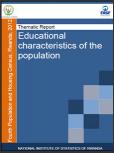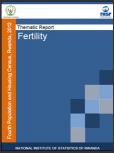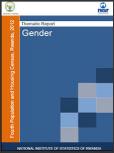The fourth Population and Housing Census in Rwanda, was conducted in August 2012. The Census operation was coordinated by the National Census Commission. Various census technical and administrative structures were put in place to ensure a successful census operation. The entire census activities were organised into three phases. In phase I, preparatory activities started with cartography and mapping, development of census tools, instruments and methodology. The Pilot Census marked the completion of this phase. In Phase II, census enumeration was implemented followed by a Post Enumeration Survey. Phase III was concerned with data processing, validation, tabulation and the release of the final census results.
Microdata for Rwanda Population and Housing Census (RPHC - 2012) |
Publications
RPHC4 Thematic Report: Socio-economic Characteristics of Persons with Disabilities
This thematic report presents the findings from the Fourth Rwanda Population and Housing Census (RPHC4) on the characteristics of persons with disabilities under the following three broad headings: (i) the number, prevalence, types, and causes of disability; (ii) the demographic, social and economic characteristics of persons with disabilities; and (iii) the characteristics of household heads with disabilities and the living standards of their households.
RPHC4 Thematic Report: Socio-cultural Characteristics of the Population
RPHC4 Thematic Report: Measurement and Mapping of Non-Monetary Poverty
At national level, 1,050,135 people are found to be severely poor and 2,818,321 moderately poor, so the total number of poor people is 3,868,456. Within the population with sufficient available data this represents 37%.
RPHC4 Thematic Report: Labour Force Participation
The Rwandan labour market is predominated by agriculture (73%).A higher percentage of employed females is employed in agriculture (82%) compared to males (63%) and a higher percentage of employed persons in rural areas is farmers(83%) compared to those in urban areas (21%).
Non-agricultural occupations in urban areas were mainly services and sales workers and craft and related trades workers. Except for agricultural and clerical support workers, men predominated in all other occupations.
RPHC4 Thematic Report: Characteristics of Households and Housing
This report focuses on two interlinked topics. On the one hand, it looks at households’ characteristics and, on the other hand, at the characteristics of the households they live in. The report is organised into 10 main chapters, the first two of which provide the reader with an overview of the Census process and the context leading up to the analysis of the Census data and the production of the report. Chapters 3 through 6 review the characteristics of Rwandan households and chapters 7 through 10 review the characteristics of households.
RPHC4 Thematic Report: Population Size, Structure and Distribution
The Fourth Rwanda Population and Housing Census (RPHC4) establish that the population of Rwanda is 10,515,973 residents, of which 52% are women and 48% men. Since the 2002 Census, the population has increased by 2.4 million, which represents an average annual growth rate of 2.6%. Thus, population growth has recovered its long-term rate following the decline in the 1990s, which were marked by the war and the genocide against the Tutsi.
RPHC4 Thematic Report: Migration and Spatial Mobility
whose place of birth is not the same as the current place of residence, and recent migration, i.e. persons who moved to their current district of residence five years or less prior to the Census. The data indicate that migration
RPHC4 Thematic Report: Educational Characteristics of the Population
This report focuses on the theme of education and uses data collected by the Fourth Rwanda Population and Housing Census in August 2012 (RPHC4). The report is structured into five chapters, with the first two providing an overview of the RPHC4 process and the objectives, context and methodological aspects of the analytical work. Chapter 3 of the report focuses on providing a snapshot of the highest level of education of the resident population aged three and above, while the school-age population and the population currently attending school are the focus of Chapter 4.
RPHC4 Thematic Report: Fertility
The objectives of the present report are to estimate the current levels of fertility, trends over time, geographical and socio-economic variations in fertility in Rwanda. The three main findings of the analysis are:
RPHC4 Thematic Report: Gender
The results of the 2012 Census show that Rwanda had a total resident population in that year of 10,515,973, of which 5,451,105 were females, representing 52% of the population. There were around 386,000 more
females than males. At national level, women outnumbered men in rural areas (53%), while the opposite was the case in urban areas (where 49% are female).

![[title]](https://statistics.gov.rw/sites/default/files/styles/pub_small_112x150_/public/publications/15e3284c-3669-4415-9407-4e68e756e084/disabilities.jpg?itok=ufKxOgFM)
![[title]](https://statistics.gov.rw/sites/default/files/styles/pub_small_112x150_/public/publications/44f8488f-93f8-4cc6-854b-85cdc01467de/socio_cult_char_pop.jpg?itok=FLLUnS-y)
![[title]](https://statistics.gov.rw/sites/default/files/styles/pub_small_112x150_/public/publications/dbbad719-7b6a-41ec-919e-63cb1b8c6707/measurement_mapping.jpg?itok=yFNQEPQw)
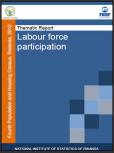
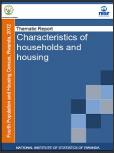
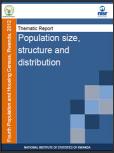
![[title]](https://statistics.gov.rw/sites/default/files/styles/pub_small_112x150_/public/publications/38e203c4-2230-476d-81ae-7f8690183b15/migration_spatial_mor.jpg?itok=BuLoptO3)
